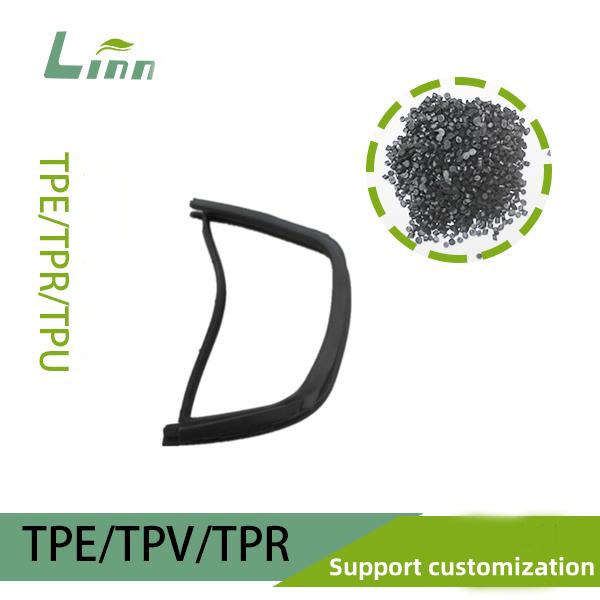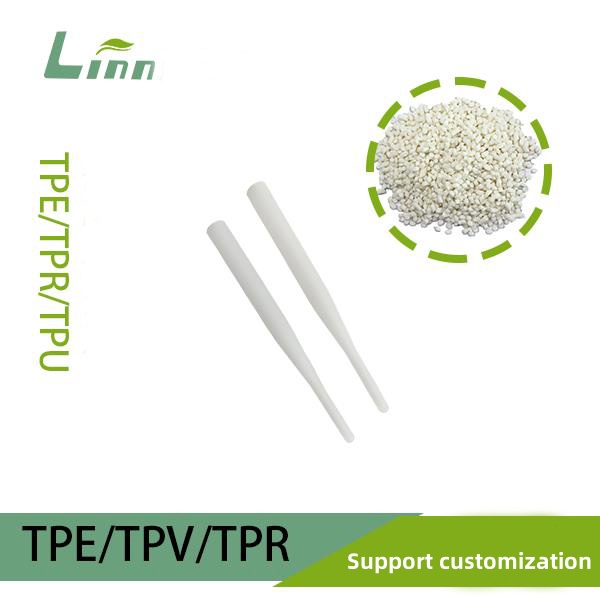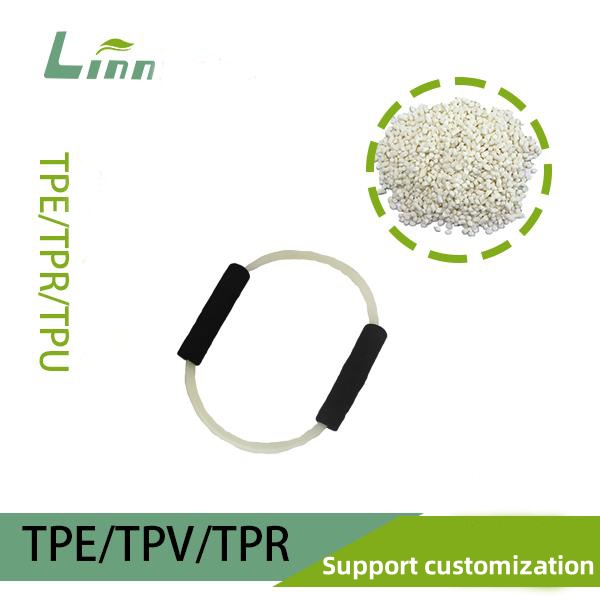Having worked in the TPE (Thermoplastic Elastomer) industry for over 15 years, I’ve handled my fair share of materials—virgin, recycled, and everything in between. One question that pops up a lot is how to figure out if a batch of TPE is recycled. It’s a valid concern, especially when you’re aiming for consistent quality in products like medical devices, consumer goods, or automotive parts. Recycled TPE can be a cost-effective and eco-friendly choice, but it’s not always labeled clearly, and poor-quality recycled material can lead to headaches like inconsistent performance or processing issues. In this article, I’ll share my tried-and-true methods for identifying recycled TPE, drawing from years of hands-on experience, lab testing, and supplier negotiations. My goal is to give you practical tools to make informed decisions about your materials.

Why Identifying Recycled TPE Matters
Before diving into the how-to, let’s talk about why this question even comes up. TPEs, like SEBS, TPU, or TPV, are prized for their flexibility, durability, and ease of processing. Virgin TPE—made fresh from raw ingredients—offers predictable performance, but it’s pricier. Recycled TPE, made from reprocessed scraps or post-consumer waste, can cut costs and support sustainability goals. The catch? Not all recycled TPE is created equal. Some batches might have impurities, degraded polymers, or inconsistent properties that mess with your production.
I’ve seen cases where a “bargain” TPE batch caused defects like surface streaks or weak parts, only to find out later it was recycled with little quality control. On the flip side, high-quality recycled TPE can perform almost as well as virgin material if processed correctly. Knowing what you’re working with helps you avoid surprises and ensures your products meet specs.
Key Characteristics of Recycled vs. Virgin TPE
Recycled TPE often differs from virgin material in subtle but detectable ways. Here’s what I look for:
Physical Appearance: Recycled TPE pellets might show color variations, specks, or uneven textures due to mixed feedstocks or contamination.
Mechanical Properties: Degradation from prior processing can weaken tensile strength, elongation, or elasticity.
Processing Behavior: Recycled TPE might flow differently, require higher temperatures, or produce more defects like bubbles or burn marks.
Chemical Composition: Additives, fillers, or impurities from recycling can alter the material’s makeup.
Odor: Recycled TPE sometimes has a stronger or “off” smell from residual contaminants.
These clues aren’t foolproof on their own, but combining multiple checks gives you a solid picture. Below, I’ll walk you through practical methods to spot recycled TPE, from simple visual inspections to advanced lab tests.

How to Identify If TPE Is Recycled
1. Visual and Sensory Inspection
The first thing I do when a new TPE batch arrives is give it a close look and a quick sniff. It’s basic but surprisingly effective.
Pellet Appearance: Virgin TPE pellets are usually uniform in color (often clear or slightly translucent for natural grades) and size, with a smooth, glossy surface. Recycled TPE might have:
Color inconsistencies (e.g., yellowish tint or grayish streaks).
Black or colored specks from contaminants.
Irregular pellet shapes from poor reprocessing.
I once spotted a recycled batch just by noticing tiny dark flecks in what was supposed to be a “natural” TPE—turned out it had traces of colored scraps.
Texture: Run your fingers over the pellets. Virgin TPE feels slick and consistent, while recycled material might feel gritty or dusty due to fillers or degraded particles.
Odor: Virgin TPE has a mild, neutral smell. Recycled TPE can carry a burnt, chemical, or oily odor from prior processing or mixed plastics. I’ve sniffed out bad batches this way—trust your nose!
My Tip: Spread a handful of pellets on a white surface under bright light to spot inconsistencies. If anything looks off, it’s a red flag to dig deeper.

2. Processing Behavior During Molding
If you’re already molding the TPE, how it behaves in the machine can tell you a lot.
Flowability: Recycled TPE often has a less consistent Melt Flow Index (MFI) due to polymer chain breakdown. You might notice:
Short shots (incomplete filling) if the material’s viscosity is too high.
Excessive flash if it flows too easily from over-degraded chains.
I had a case where a TPE batch flowed fine for small parts but failed on larger molds—lab tests later confirmed it was recycled with a wide MFI range.
Defect Patterns: Recycled TPE is prone to:
Surface streaks or haze from mixed polymers.
Bubbles or voids from moisture or volatile impurities.
Burn marks from degraded additives breaking down at high temperatures.
Processing Stability: Virgin TPE runs smoothly with stable cycle times. Recycled material might require frequent tweaks to temperature or pressure, signaling inconsistency. I once spent hours adjusting a machine only to realize the TPE was recycled with uneven filler content.
Real Story: A client of mine was molding TPE seals and kept getting surface defects. We traced it to a recycled batch with inconsistent flow—switching to a virgin grade cleared it up, but not before a costly production delay.

3. Mechanical Property Testing
If visual and processing clues raise suspicions, I turn to mechanical tests to compare the TPE against its datasheet specs.
| Test | What It Reveals | How to Spot Recycled TPE |
|---|---|---|
| Tensile Strength | Measures material’s resistance to pulling forces | Recycled TPE often has lower strength (e.g., 5-10% below virgin specs) due to degradation. |
| Elongation at Break | How far the material stretches before breaking | Reduced elongation (e.g., 300% vs. 500% for virgin) signals chain breakdown. |
| Hardness | Shore A or D scale for flexibility | Inconsistent hardness across a batch suggests mixed or recycled material. |
| Tear Strength | Resistance to tearing under stress | Lower tear strength in recycled TPE points to impurities or degraded polymers. |
How to Test: Use a universal testing machine for tensile and tear tests, and a durometer for hardness. I recommend molding test plaques under controlled conditions to ensure fair results.
What I Look For: If the material’s tensile strength is, say, 8 MPa when the datasheet claims 10 MPa, or if hardness varies by ±5 Shore A across samples, it’s likely recycled or poorly processed.
My Experience: I once tested a TPE batch that looked fine but failed elongation tests—turns out it was recycled with high filler content, cutting costs but compromising stretch.
Pro Tip: If you don’t have in-house testing gear, Linn’s lab services can run these tests and compare results to virgin TPE standards.
4. Chemical Analysis
For a definitive answer, I go to the lab for chemical tests. These are pricier but catch things the naked eye or basic tests miss.
Fourier Transform Infrared Spectroscopy (FTIR): FTIR identifies the material’s molecular makeup. Virgin TPE shows clean, consistent peaks (e.g., for SEBS or TPU). Recycled TPE might reveal:
Extra peaks from contaminants like PVC or PP.
Broadened peaks from degraded polymers.
I used FTIR to bust a supplier who claimed their TPE was virgin but had traces of recycled PE.
Differential Scanning Calorimetry (DSC): DSC measures melting and crystallization behavior. Recycled TPE often has:
Lower or broader melting points from mixed polymers.
Irregular crystallization peaks from additives or degradation.
A DSC test once helped me spot a recycled TPE with a melting point 10°C below its spec.
Ash Content Test: Burning a sample leaves ash from inorganic fillers (e.g., calcium carbonate). Recycled TPE often has higher ash content (2-5% vs. <1% for virgin) due to cheap fillers. I’ve caught low-grade recycled batches this way.
My Advice: Work with a lab that specializes in polymers. If you’re sourcing TPE through Linn, we can arrange chemical analysis to verify material purity.

5. Supplier Documentation and Traceability
Sometimes, the easiest way to confirm if TPE is recycled is to ask the supplier—but you need to know what to ask for.
Certificate of Analysis (CoA): A legit CoA lists MFI, hardness, tensile strength, and other specs. Compare these to your test results. If they don’t match, question the material’s origins.
Material Safety Data Sheet (MSDS): Check for notes on recycled content. Some suppliers disclose post-consumer or post-industrial recycled percentages.
Batch Traceability: Ask for records of the material’s source. Virgin TPE comes from controlled resin production, while recycled TPE might trace back to scrap or regrind. I’ve pressed suppliers for this info and caught vague answers that hinted at recycling.
My Story: I once dealt with a supplier who swore their TPE was virgin but couldn’t provide batch records. A quick FTIR test showed mixed polymers—lesson learned: always verify claims.

Practical Steps to Verify TPE Quality
Here’s my step-by-step process for checking if TPE is recycled:
Inspect Pellets: Look for color, texture, or odor issues. Reject batches with obvious specks or irregularities.
Run a Trial Mold: Mold a small batch and watch for flow issues, defects, or parameter instability.
Test Mechanical Properties: Compare tensile strength, elongation, and hardness to the datasheet.
Conduct Chemical Tests: Use FTIR or DSC if you suspect recycling but need hard proof.
Demand Supplier Docs: Request CoA, MSDS, and traceability records. Cross-check with your findings.
Document Findings: Keep a log of each batch’s performance to spot patterns over time.
My Rule of Thumb: Start with cheap, quick checks (visual and molding). If those raise flags, invest in lab tests to confirm.
Pros and Cons of Using Recycled TPE
To help you decide whether recycled TPE is worth considering, here’s a table I put together based on my experience:
| Aspect | Virgin TPE | Recycled TPE |
|---|---|---|
| Cost | Higher (100-150% more than recycled) | Lower, but quality varies widely. |
| Performance | Consistent strength, elasticity, and clarity | May have reduced strength or inconsistent properties due to degradation. |
| Processing | Stable, predictable flow and cycle times | May require parameter tweaks; higher risk of defects like streaks or bubbles. |
| Sustainability | Higher environmental footprint | Eco-friendly if sourced responsibly, but contamination can negate benefits. |
| Applications | Ideal for medical, food-grade, or high-end uses | Good for non-critical parts (e.g., grips, mats) if quality is verified. |
My Take: Recycled TPE is great for cost-sensitive projects, but I only use it after rigorous testing. For critical applications like medical tubing, I stick with virgin material to avoid risks.
How to Source Reliable TPE
If you want to avoid recycled TPE (or ensure high-quality recycled material), here’s what I do:
Work with Trusted Suppliers: Choose suppliers with transparent sourcing and quality control. Linn’s TPE supply chain is built on vetted partners who provide full documentation.
Request Samples: Test small batches before committing to a big order. I always mold a few parts to check performance.
Negotiate Specs: Be clear about your needs (e.g., “virgin SEBS, MFI 10-15”). I’ve found that upfront clarity reduces mix-ups.
Audit Suppliers: If possible, visit their facility to see how they handle materials. I’ve caught sloppy recycling practices this way.
Case Study: A client once bought “virgin” TPE at a discount, only to find it was recycled with high ash content. Switching to Linn’s verified virgin TPE doubled their part lifespan—no more complaints.

Maintaining Quality Control in Production
Once you’ve identified whether your TPE is recycled, keep quality consistent:
Set Testing Protocols: Check every batch for appearance, MFI, and hardness. I run spot tests on 10% of incoming material.
Train Your Team: Teach operators to spot signs of recycled TPE (e.g., odd smells or molding issues). My crew knows to flag anything unusual.
Track Performance: Log defects and compare them to material sources. This helped me pinpoint a recycled batch causing high scrap rates.
Store Properly: Keep TPE sealed and dry to avoid contamination. I use airtight bins to protect pellets from dust or moisture.
My Lesson Learned: Early on, I assumed all TPE was “good enough” and skipped checks. A bad batch cost me a week of rework. Now, I treat every lot like it’s suspect until proven otherwise.
Common Questions About Identifying Recycled TPE
Here are answers to questions I get a lot, based on real-world scenarios:
Q1: Can I trust a supplier who says their TPE is virgin?
A: Not blindly. Ask for a CoA, batch records, and test results. If they dodge details, test the material yourself—FTIR or mechanical tests don’t lie.
Q2: Is recycled TPE always worse than virgin?
A: Not necessarily. High-quality recycled TPE can perform well for non-critical parts. The key is verifying consistency with tests like tensile strength or MFI.
Q3: My TPE looks fine but molds poorly. Could it be recycled?
A: Yep. Inconsistent flow or defects like streaks often point to recycled material with impurities. Run a lab test to confirm composition.
Q4: Are there visual signs of recycled TPE in finished parts?
A: Sometimes—look for haze, streaks, or uneven color. I’ve seen recycled TPE cause cloudy surfaces in parts meant to be clear.
Q5: How costly are lab tests for identifying recycled TPE?
A: Basic tests like MFI or hardness are affordable ($50-100 per sample). Advanced ones like FTIR or DSC run $200-500 but are worth it for big orders. Linn can help arrange cost-effective testing.

Final Thoughts
Figuring out if TPE is recycled isn’t just about avoiding “bad” material—it’s about ensuring your products meet expectations, whether you’re cutting costs with recycled TPE or splurging on virgin for top performance. From visual checks to lab tests, the methods I’ve shared come from years of trial, error, and hard-won successes. My biggest advice? Trust but verify. A little diligence upfront saves a lot of pain down the line.
If you’re unsure about a TPE batch or want help setting up a testing plan, reach out to Linn’s team. We’re here to guide you through the process and keep your production running smoothly. Here’s to making smarter material choices and nailing every project!
